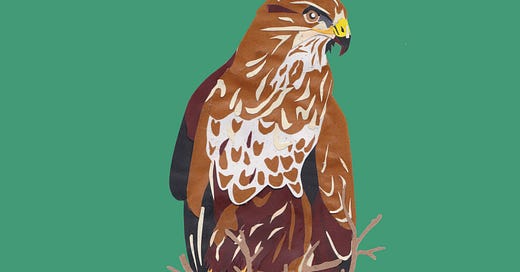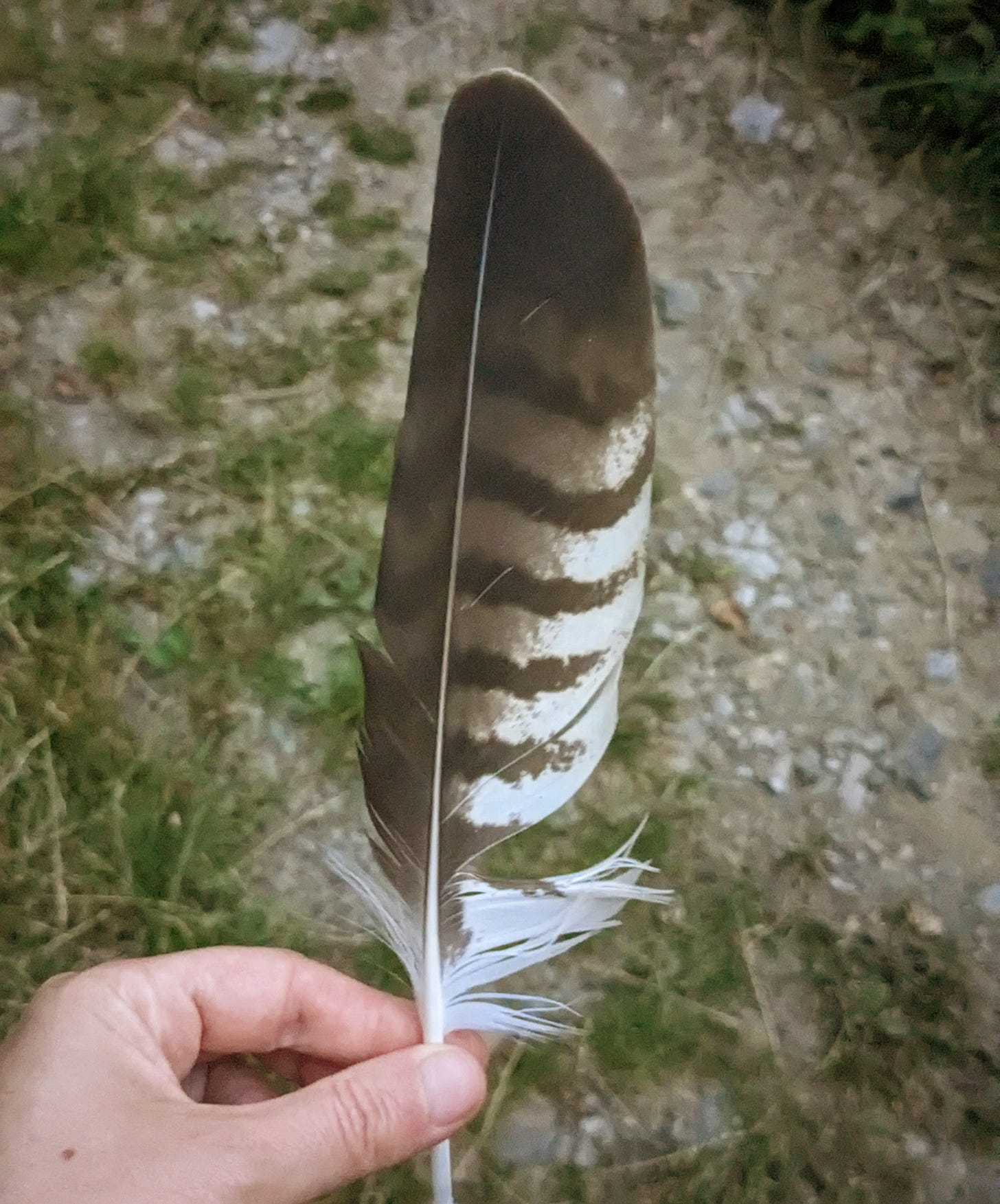Why I'm no longer saying "It's just a buzzard"
Impressive comebacks and showing more respect to things we see regularly
While on holiday on the Isle of Arran last week, I caught myself saying “It’s just a buzzard” on more than one occasion. To be fair to myself, I was looking for golden eagles (with no success) or hen harriers (with some success), and I can see buzzards at home. But the more I thought about it, the more I reminded myself I should be showing the humble buzzard some more respect. Not only do they bring me joy on an almost daily basis now that I can see them from my office window in Kent, but I’ve had some incredibly memorable buzzard sightings over the years. When you see common buzzards (Buteo buteo) up close, whether through binoculars or simply through a lucky close encounter, you’ll see they really are magnificent beasts. Not only that, but buzzards were once almost hunted to extinction in the UK and have made an incredible comeback.
In the early 1900s there were as few as 1,000 breeding pairs of common buzzard in the UK. Many were killed by gamekeepers who were scared the birds would prey on their pheasants and grouse. The introduction of organochlorine pesticides in the 1940s also affected buzzards’ reproductive capacity and in the 1950s, 99% of the country's rabbits (a vital food source for buzzards) were wiped out due to a virus called myxomatosis.
Thankfully, buzzards are now protected under Schedule 1 of the Wildlife and Countryside Act 1981 (though that unfortunately still doesn’t stop some angry gamekeepers trapping and killing them) and most organochlorine pesticides have been banned in the UK. There are also lots of wonderful people doing important conservation work and campaigning on behalf of wildlife, and buzzards are now the UK’s most common and widespread bird of prey. There are thought to be 57,000-79,000 breeding pairs across the UK (according to the RSPB) and they can be found almost anywhere.

So your prompt this week is to look for buzzards (and listen out for their call). If you know you’re unlikely to see a buzzard where you live, why not try to look at something you see often in a totally new way. Perhaps you regularly say “Oh, it’s just a pigeon” but what you’re actually seeing is a collared dove and you’ve never really thought about that before. Maybe you catch yourself saying “It’s just a crow” but what you’re really seeing is a jackdaw… or you had no idea how smart crows can be. Or maybe the “just a gull” you spot has actually migrated here from Scandinavia and deserves a little more respect! Maybe you’re not interested in birds at all, but this week you look into that tree, lichen or “weed” you see every day… just because you’re used to seeing it, doesn’t mean it isn’t spectacular!
How to spot a buzzard
Listen for the buzzard’s distinctive call. I almost always see them before I hear them.
Buzzards have a distinctive flight style too - get to know it and you’ll be confident what you’re seeing is a buzzard (you can ignore the second half of that video unless you’re interested in honey buzzards, which are summer visitors).
March-April is buzzard breeding season - males can be spotted performing a 'roller coaster' display, where they soar up high and then swoop down over and over again in order to attract a mate.
Look out for crow commotion. I’ve often spotted buzzards where I live after noticing carrion crows acting strangely, flapping and cawing all over the shop. When I stop to look, they often appear to be bullying a buzzard, or perhaps defending their territory… A classic example of how noticing one thing can lead you to another.
Sources and Further Reading
BBC Article: How buzzards came to fly over the UK again
Wildlife Trusts: Buzzard profile
Woodland Trust: What Buzzards Eat
Hawk Conservancy: Researching Buzzard numbers in southern England
BTO: Bird ID - Summer Buzzards (Video)
British Birdsongs: Buzzard (Audio)
Don’t forget to join in with this month’s chat and share your sightings! I’d love to hear about what you’ve been noticing in nature where you live.
Events & Campaigns
I’m hosting a nature journaling walk in Maidstone on Thursday 21st March as part of the Heart of Kent Walking Festival, in collaboration with my friends at Kent Art Collective. Book tickets here.
I just signed up to The Big Plastic Count again. Next week, thousands of people around the country are going to count their household plastic waste and submit the data to the UK’s biggest investigation into household plastic waste.
The evidence will put pressure on the UK government to push for an ambitious Global Plastics Treaty to end the age of plastic for good.
The plastics problem is still with us. Together we can convince the government to act.









Yes, I so agree! It’s easy to get into the trap of ‘Oh it’s just a…’ and not notice these animals for what they do. In Oxford that’s now the case for red kites - nobody living around here pays them the slightest bit of attention (except me 😆) but when we have visitors from other parts of the UK they get really excited to see one overhead.
Lovely letter, Zabby. Thank you! We see buzzards all the time now but I still find it quite thrilling. They are quite magnificent birds. I recognise their call now and think it's a privilege to be underneath their wingspan whilst they're circling above. Thank you for all these news facts!
Definitely guilty of the 'it's just a XXXX' and want to stop doing that and be attentive to all nature.
I didn't know about this plastic campaign either so I'll take a look.
Hope you had a great holiday x